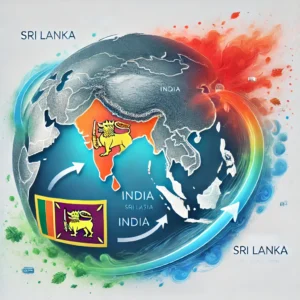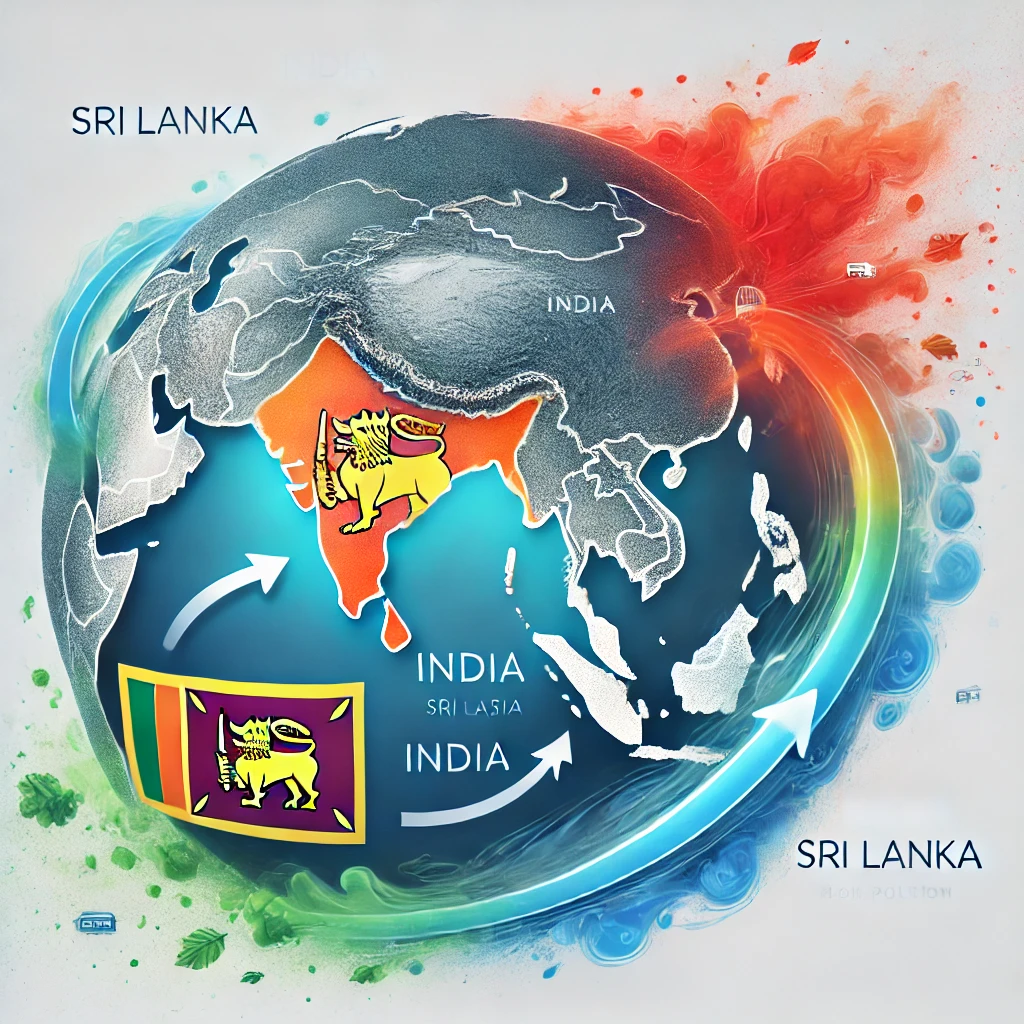Sri Lanka Chokes Under Rising Air Pollution: A Silent Crisis Unfolds
Sri Lanka is shrouded in a greyish-white haze—but it isn’t mist. It’s pollution. The island has been experiencing its worst air quality since 2022, with the past three months seeing dangerously high levels of airborne toxins. Diesel soot, industrial smoke, burning wood, sulfate, and microscopic metal particles fill the air, forcing people indoors while leaving those who venture outside struggling for breath.

The Seasonal Smog: A Crisis in the Air
Air pollution in Sri Lanka follows a seasonal pattern, worsening between October and March due to the North-East monsoon. During this time, pollutants from across Asia drift over the island, mixing with domestic emissions. In Colombo, nearly 20% of the days from November 1 to February 14 were categorized as “unhealthy for sensitive groups”, based on the government’s air quality standards. However, the classification is notably less stringent than WHO guidelines.
In Jaffna, the situation was even more severe, with two days recorded as “unhealthy for all groups.” Children, pregnant women, seniors, and those with respiratory conditions are at heightened risk, facing an increased likelihood of asthma, lung infections, chronic bronchitis, and even premature death.
How Bad Is It? The Numbers Speak
While precise data linking air pollution to specific health conditions in Sri Lanka remains scarce, respiratory diseases are on the rise. The Ministry of Health has repeatedly cautioned against prolonged exposure to pollution, citing increased hospital admissions for respiratory ailments.
A 2012 WHO report estimated that 1,000 deaths in Sri Lanka were directly caused by outdoor air pollution. Given the worsening situation, experts believe this number has only risen in recent years.
Regulations Without Reinforcement
Sri Lanka does have air quality standards under the National Environment Act, which states that particulate matter smaller than 2.5 micrometres (PM2.5) should not exceed 50 micrograms per cubic meter over 24 hours. However, this limit has been breached multiple times in all provinces except Nuwara Eliya over the past three months. The regulations, however, do not outline consequences or corrective actions when air pollution levels exceed safe limits.
A Regional Crisis Beyond Borders
Sri Lanka’s battle with pollution isn’t just a domestic issue—it’s part of a larger South Asian crisis. India, Pakistan, and Bangladesh consistently rank among the world’s most polluted countries.
According to the World Bank, up to 50% of the pollution in many South Asian cities originates from another country. In Sri Lanka’s case, a significant amount of its air pollution drifts in from India and other parts of the region. The Central Environmental Authority has acknowledged that international cooperation is crucial in tackling this crisis.

Homegrown Pollution: The Role of Vehicles and Industry
While cross-border pollution plays a significant role, local sources are also major contributors. According to H.D.S. Premasiri, air quality coordinator at the National Building Research Organization (NBRO), vehicle emissions account for nearly 60% of urban air pollution.
Sensor data from Colombo’s air monitoring systems indicate that air quality often dips into the “unhealthy for sensitive groups” category during peak traffic hours. Exhaust fumes from outdated vehicles, industrial emissions, agricultural burning, and garbage incineration all worsen air pollution levels.
The government has implemented some measures to curb pollution, including emission standards for industrial plants and vehicle emission programs. However, experts warn that more needs to be done, particularly at the municipal level to reduce household and street-level pollution.
What Can Be Done? Expert Recommendations
Dr. Ranil Dhammapala, senior meteorologist at the South Coast Air Quality Management District, California, emphasizes the need for public awareness campaigns and seasonal pollution management strategies.
“During the high-pollution months from October to March, we need to ban backyard burning and only allow it during the hottest parts of the day, when pollutants disperse more efficiently,” he advises. He also suggests including air quality updates in weather forecasts to keep citizens informed and encourage behavioral changes.
Air Pollution and Economic Fallout
Beyond the devastating health impacts, air pollution is also an economic burden.
The World Bank estimates that 1.2 billion workdays are lost annually worldwide due to air pollution-related illnesses. In Sri Lanka, construction workers have already begun adjusting their work schedules to avoid peak pollution hours.
Tourism, a key pillar of Sri Lanka’s economy, is also at risk.
According to Chalana Perera, a regenerative tourism specialist, air pollution is becoming a deciding factor for travelers. “Just as governments issue travel advisories on crime and health risks, in the near future, air quality will become a major concern for tourists,” he warns.
Countries like Australia and the United States already provide real-time air quality alerts to travelers. In New Delhi, where tourism has declined due to severe smog, hotels have begun marketing air filtration systems to attract guests.
Sri Lanka’s Opportunity to Lead
If Sri Lanka acts swiftly, it has the potential to set itself apart in South Asia as a cleaner, healthier destination.
“India’s industrial economy is large enough to weather a decline in tourism,” explains Perera, “but Sri Lanka is different. If we implement smart, proactive solutions now, we can position ourselves as a country with pristine air, clean cities, and a sustainable tourism sector.”
A Call for Action
The time for reactive measures is over. With air pollution levels rising and both health and economic risks mounting, Sri Lanka must move towards stronger enforcement of air quality laws, regional cooperation, and public engagement.
Unless urgent steps are taken, the toxic haze blanketing Sri Lanka will not just be a seasonal phenomenon—it will become the new normal.







